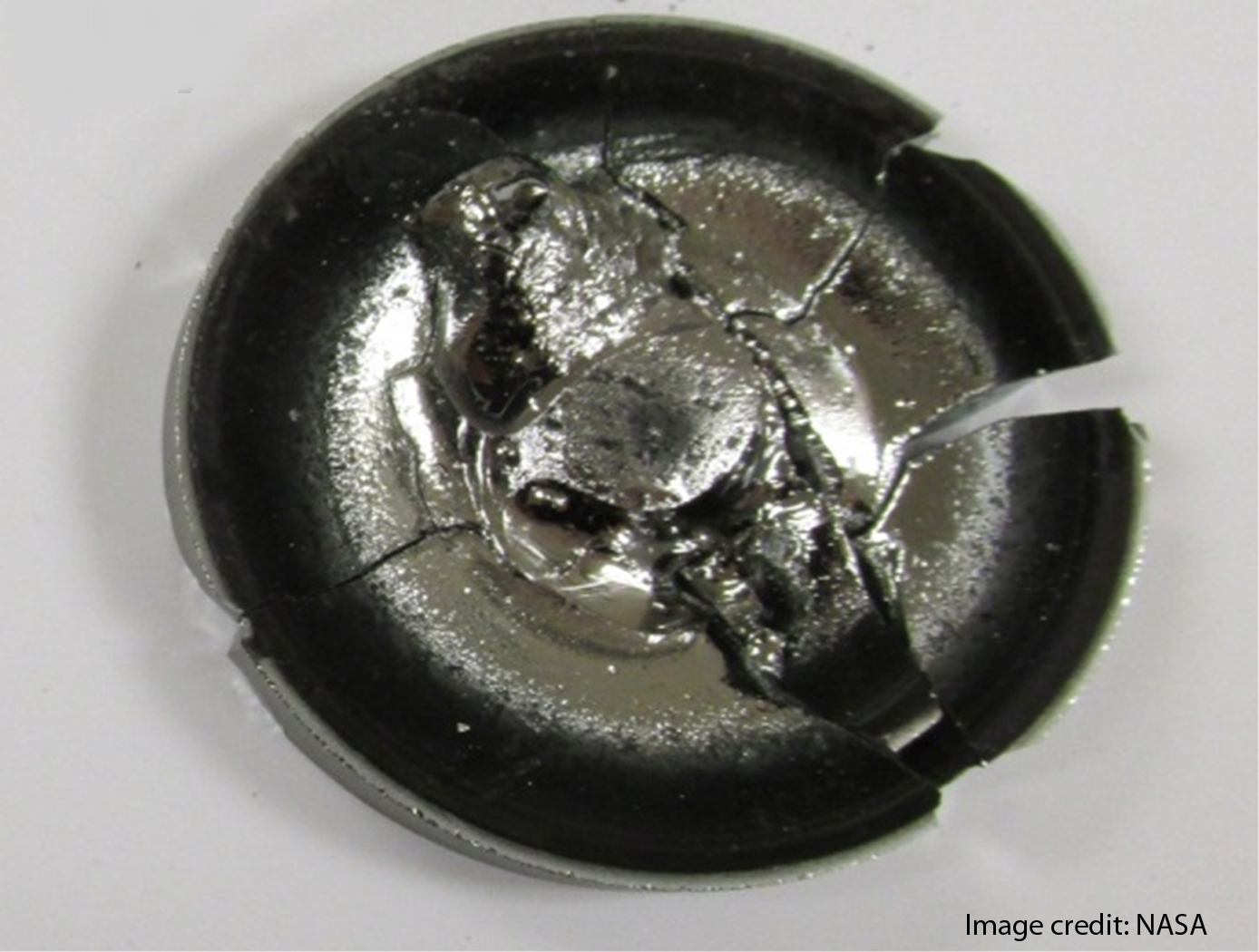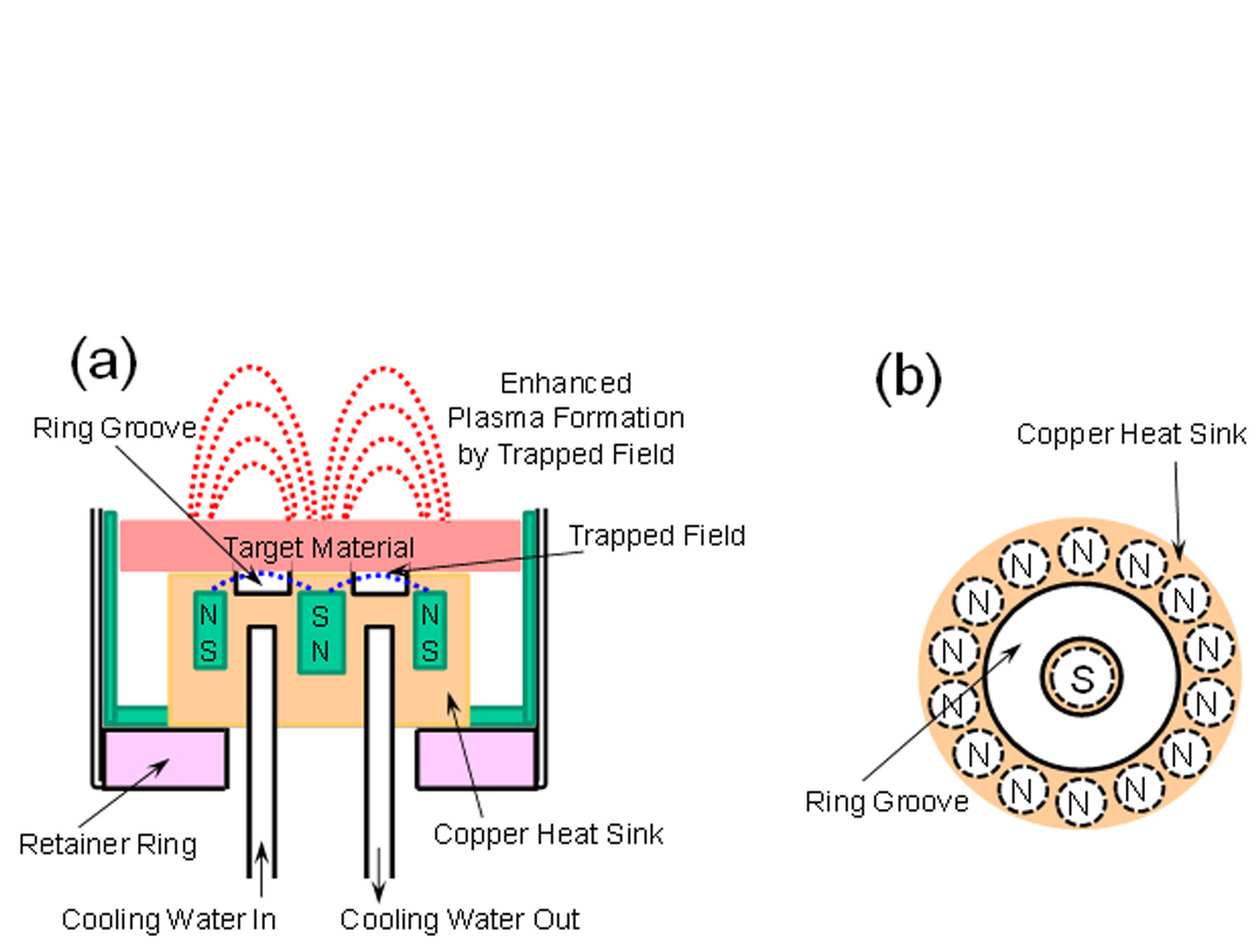Molten Target Sputtering (MTS) Deposition
materials and coatings
Molten Target Sputtering (MTS) Deposition (LAR-TOPS-246)
Molten target sputtering (MTS) deposition for enhanced kinetic energy and flux of ionized atoms
Overview
The sputtering process has emerged as one of the major deposition techniques for thin film coating practices in research and industrial production. The process is limited by low deposition rates and low kinetic energy of the sputtered atoms. This not only slows the time required to sputter a film, it lowers the purity of the sputtered film. The Molten Target Sputtering (MTS) method can increase the kinetic energy, the energy latency, and the flux density of sputtered atoms by combining the benefits of both magnetron sputtering and evaporation systems. It does this by a clever, but simple mechanical modification to the magnetron sputtering gun. For the MTS method, a simple 1~2mm (depth and width) ring-shaped groove is cut between the magnets in order to keep a gap between the copper plate and the sputtering target. This effectively is an efficiency increase to a current magnetron based sputtering machine. The ring enhances the magnetic field intensity and increases the temperature of the target material.
The Technology
A key difference in design between a conventional sputtering gun and the MTS gun seems very
minor, but the ring-shaped groove between magnets allows for trapping a portion of magnetic field within the groove. A trapped field creates an additive force to expel the ionized particles (atoms and molecules combined within plasma) by increasing their kinetic energy. The ring groove also serves to increase the target material temperature because the conduction passage of thermal energy to the water-cooled copper sink is interrupted by the empty space of a ring groove below the target. Accordingly, the target surface material is heated to a higher temperature, which in turn increases the flux density by more easily liberating the atoms from the target. The MTS enables the growth of high quality thin (<100nm) and thick (>100m) films with the molten target and plasma. The degree of precise formation of rhombohedral film structures on a sapphire substrate is greatly improved. This leads to higher quality crystals with higher yield. In conventional techniques a pre-processor is required to elevate the sapphire wafer temperature through a 2-4 hour thermal soak process. These high temperatures, typically 890 deg. C, are costly and burdensome in a production facility. The MTS process can enable the sputtering temperatures to operate at 500 deg. C and still produce superior quality films.


Benefits
- A very high deposition rate of extremely thick (>100m) film
- Denser microstructures and smoother surface (rms <1 nm)
- Better control of film composition and enhanced resistance to cracking
- Higher quality film including epitaxy films
- Extends the ability to coat the inner surface of complex geometries
- Lowers the temperature deposition
Applications
- Leading firms note that the shape, distribution, and characteristics of the magnetic field produced by the sputtering magnetron are pivotal to success, both in the lab and production.
- Because this approach melts the target material, it can reform itself into a constant, level shape. This may reduce the common problem of race tracks occurring in solid target material, leading to premature end of life and excessive down time due to required cleaning of the magnetron chamber.
- Magnetron sputtering guns are used across a wide range of industries, opening up chances for adoption.
Technology Details
materials and coatings
LAR-TOPS-246
LAR-18659-1


